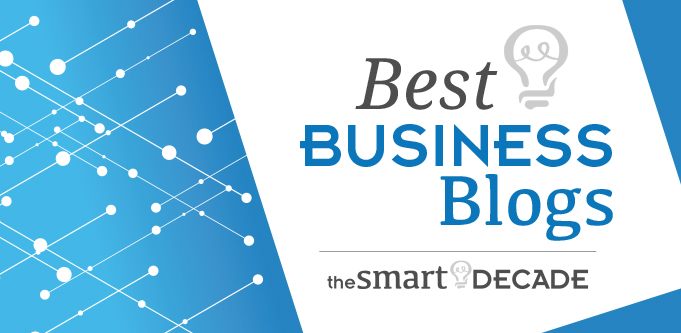Mystery shop your site
Instead of trying to source fresh traffic, have you asked yourself whether you’re utilising your existing traffic? One of the easiest ways you can ensure a smooth sales funnel for today’s customers is to become one. Have you ever purchased anything from your own store? Test it on all devices and platforms to identify problem areas and increase conversions.
What I learned
- Make use of existing traffic by identifying problem areas
- When you make changes, establish a sample size
- Analyse your revenue graphs
- Be your own mystery shopper
- See me at Retail Global for all the insider tips
Transcript
Hi, welcome back Rankers! It`s getting cold. Winter is coming. Really.
I want to talk to you a little bit about this today. Look, it`s more about making use of your existing traffic, making sure that you`re not annoying existing people who are trying to buy from you. `Cause by and large, as I have said in the last few months, that`s a lot of what we find. And by the way, I`m wearing the Pubcon shirt today, because speaking at Pubcon again this year in Vegas, October. I`ll give you the full dates closer and the paper that I`m doing.
The right sample size
However, this is just another one. Now, this change was actually analysed by one of our digital business consultants. Nothing to do with me. He`d gone in and picked this up and said, `This has got to be killing sales,` and he was right. When we first posted this data, I only had about a week`s worth of data. I posted it on LinkedIn. I forget who it was, but they said, `Really, a week`s worth of data? You`re going to make a call on that?` And it wasn`t so much that I was making a call on that week`s worth of data, it was that we had made this change, and we`d seen immediate upticks in revenue. We didn`t know whether it was going to last or to what extent it would increase revenue, but we knew it was working. To what extent, we didn`t know how much. Well, now we know, `cause we`ve got a bigger sample size. Of course, over the course of the year, you`re going to get a better idea, right? But other things happened to the site during that time as well.
But when you`re trying to isolate a change and its effect, you`re best to just watch it like a hawk. Establish a sample size. Like for us, like this person made the comment, `Oh, a week, is that enough?` Well, it was around three and half thousand sessions. So for this site, that was enough to make a call on, it was a big enough percentage. Like it was 10% of whatever we were looking at at the time. So a fair enough sample size.
So what we`re looking at here is this client. What I`ve got up here on this graph is a users versus revenue. We made the change on the 11th of April, so I`m looking before the 11th of April up until today. I`m looking at users versus revenue, because it`s important to have a look at the revenue graphs inside Google Analytics and across your separate channels. The reason for this, is you can see that some channels might be a bit lumpy or you might find that you`re getting more sales through some channels at a certain time of the week or certain time of the day, whole range of things depending on the category you`re in and those sorts of things. So I like to actually go in and have a look and do that.
So the revenue`s up 52%. Now, the areas where it`s really interesting is the ones where we don`t have any more traffic, like email, right? Email is down 14% on traffic, and normally your email is going to convert better than your other channels, `cause it`s from people that know you. But in this case, it`s 95% up on the last email that was done. You can see there, the traffic for the email is down, but the e-commerce transaction, right, is up 111%. That could be higher, right? 0.7% for an email is terrible. There`s a lot there to do. You can see organic is up 4% in traffic but 88% in revenue. CPC up slightly, 9%, but 95% in revenue.
Be your own customer
So all of these things together, you begin to see a pattern. You go, okay, I understand. Every one of these changes that we do now, it`s basically an iterative approach. So we`ve made that one. We`ll let that one sit. It`s had a couple of weeks. Leave it another week, see what happens. Then we can go and make some assessments about where we can either get more revenue, make the next change, get more traffic. But I think right now, for this client`s … For instance, you look at that email conversion rate, and you can see just with the change at the site that we made, it has increased revenue from email by 97%. But we haven`t looked at the emails yet, right? So you`ve got less people clicking or opening their email or coming to an email, but you`ve doubled your revenue, and we haven`t actually looked at the email.
So that is our next area where we should look at, `cause that represents, I think, the biggest revenue uptick. So for instance, if we`re getting two and a half thousand or three thousand people coming to your email, and you`re only getting 0.7% … I mean, all these conversion rates are terrible, right, in the grand scheme of things. And we know why. They could all be a lot better. But 0.7, I reckon we should be able to get that up to at least 1.5. So that means we double that revenue again, right? So that would be the plan.
Now, I`m not going to tell the client I`m going to try to do that, `cause I`ve got to work out whether I can do it first, and then we`ll have that discussion with the client. And the things that can stop this happening is the client`s reluctance to make changes to their email, to the way that they email, giving you access, all those sorts of things.
So just remember, if you`re doing this in-house, or if you`re doing this for yourself, have a look at the little things. Have a look at the things that make it hard for you to buy from your own site. Get your family and friends to have a go. Basically, we`re like mystery shoppers for a digital store. So that`s what we do. You can do that on your own site as well and get a feel for things and how things are working and aren`t working. Make sure you try it on different devices. Do it on a tablet, do it on a mobile, and do it on desktop. Do it on different browsers. But have a play with your site as though you are someone who doesn`t know your site or hasn`t used it before. Quite often, a lot of business owners have not used their own site to make a purchase. You really should.
Hopefully that`s helpful. Remember, we`re teaching all of this at Retail Global at the end of May. Incidentally, the workshop`s selling out fast. Sorry, I didn`t realise. There`s not many seats left. I think there`s only a few left, so get on to retailglobal.com today if you are a retailer. No agencies, sorry. We`ll see you there. Thanks very much everyone, bye.

Jim’s been here for a while, you know who he is.


